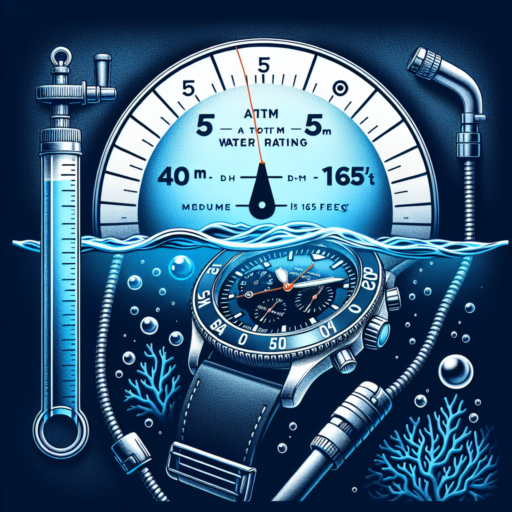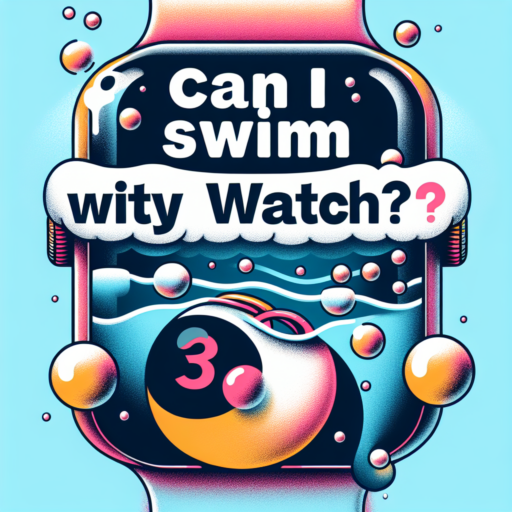No se han encontrado productos.
Can I swim with a 5 atm watch?
Understanding the water resistance specifications on watches can sometimes be puzzling, especially when it comes to knowing if you can take your favorite timepiece for a swim. A watch marked with 5 ATM (atmospheres) signifies that it’s water-resistant up to 50 meters in depth. But does this mean it’s suitable for swimming? Let’s delve into the specifics to provide clarity on this common question.
Firstly, a 5 ATM rating on a watch does indeed indicate a level of water resistance that technically permits it to withstand pressures equivalent to a depth of 50 meters. In practical terms, this means the watch should handle splashes, rain, and perhaps even a shower without succumbing to water damage. However, when it comes to swimming, the matter becomes slightly more nuanced. While a 5 ATM water resistance is certainly more robust than that of watches with lower ratings, it doesn’t fully guarantee suitability for all types of swimming activities.
Different swimming actions, such as diving into a pool or ocean waves, can exert pressure on a watch that exceeds 5 ATM due to the velocity and force of the water impact. It’s crucial to consider not just the static depth of water but also the dynamic pressure changes induced by movement. Therefore, while swimming at the surface without vigorous arm movements might be within the safe limits for a 5 ATM rated watch, diving or high-impact water sports could pose risks.
What does 5 atm water resistant mean?
When you come across a watch or a fitness tracker that’s labeled as 5 ATM water resistant, you’re looking at a device designed to withstand pressures equivalent to being 50 meters or 164 feet underwater. This specification doesn’t imply that you can dive to 50 meters depth with it but rather indicates the device’s ability to resist pressure at a static or still state, which is comparable to the pressure found at that depth.
The term «ATM» stands for atmospheres, where 1 atmosphere (1 ATM) is the pressure exerted by the weight of the atmosphere at sea level, about 14.7 pounds per square inch. Therefore, a 5 ATM water resistance rating suggests that the device can withstand the pressure of 5 atmospheres, a significant level of durability against water ingress. This makes 5 ATM rated devices suitable for activities such as swimming, showering, and exposure to rain.
However, it’s crucial to understand the limitations. Activities that involve high-velocity water, such as water skiing, diving into a pool, or ocean sports, may exceed the pressure equivalent of 5 ATM and could potentially compromise the water-resistant integrity of the device. Manufacturers often advise against exposing these devices to high-impact water activities despite their seemingly robust water resistance rating.
What ATM rating is waterproof?
Understanding the ATM rating is crucial when determining whether a device is waterproof. The term «ATM» stands for atmospheres, a unit of pressure used in the watch industry to denote water resistance levels. Generally, a higher ATM rating suggests better water resistance, but it’s important to know the specifics to gauge true waterproof capabilities.
Understanding ATM Ratings
ATM ratings are often found on devices subjected to moisture and water exposure, particularly watches. A 3 ATM rating implies resistance to rain and occasional splashes, while a 5 ATM rating offers suitability for short periods of swimming in shallow water. Devices with a 10 ATM rating are suitable for snorkeling and swimming, but not for high-speed water sports or deep diving.
It’s essential to note that the term «waterproof» can be misleading. No watch is entirely waterproof, and the International Organization for Standardization (ISO) advises against using such terminology. Instead, water resistance is the preferred term, and understanding the nuances between different ATM ratings can help in selecting a device that meets your water exposure needs.
Is 5 atm water resistant to meters?
Understanding the specifics behind the term 5 ATM water resistance is crucial for anyone looking to gauge how waterproof their device or watch is. The «ATM» here stands for atmospheres, a unit of pressure that greatly influences the water resistance rating of watches and other devices. But what does this translate to when we talk about meters underwater?
Essentially, a 5 ATM rating signifies that the item is resistant to pressure at a depth of up to 50 meters (approximately 164 feet) under static conditions. This means that the device can withstand pressures equivalent to a depth of 50 meters, making it suitable for shallow-water activities such as swimming in a pool or ocean. However, it’s important to note that these conditions assume static or non-moving circumstances.
Yet, when you introduce movement into the equation – say, arm movements while swimming or any aquatic sport – the pressure exerted on the watch increases beyond that of a static environment. Therefore, a 5 ATM rating does not explicitly guarantee that a device can be used for all water activities at depths of 50 meters or less without risking water ingress. It’s more about understanding the limitations and applications of the 5 ATM rating to ensure the longevity and functionality of your water-resistant device.



